
By Terry Connell, Web Coordinator - NOAA's National Ocean Service
September 22, 2012
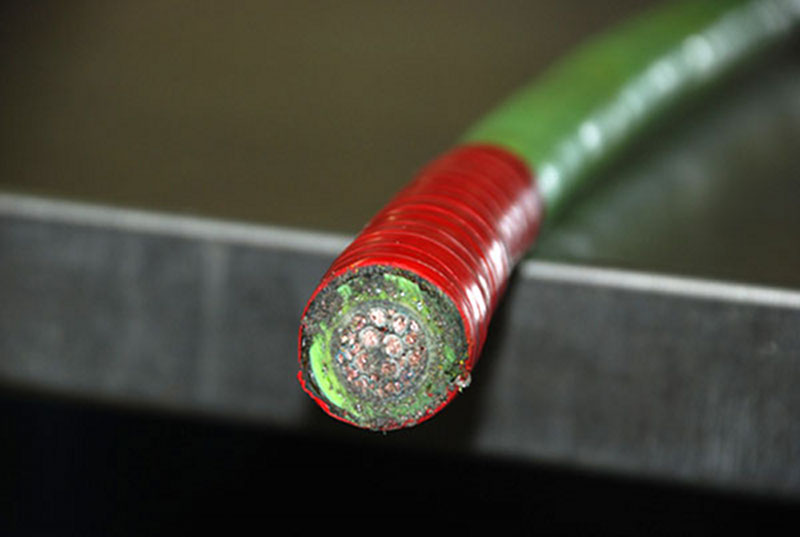
The end slice of the umbilical showing the layers of protective casings, tightly packed fiber optics lines, and power conduits which send data to and from the ROV along with 1,200 volts of power to operate it. Image courtesy of the Deepwater Canyons 2012 Expedition, NOAA-OER/BOEM. Download image (jpg, 40 KB).
The rough start to this mission due to weather and issues with equipment that had delayed the science work by several days were seemingly behind us. On Thursday, we had the first successful remotely operated vehicle (ROV) dive, followed by a fairly successful night of specimen sampling. Friday morning greeted us with another beautiful, calm day as the ship and ROV crews began lowering the Kraken II into the water.
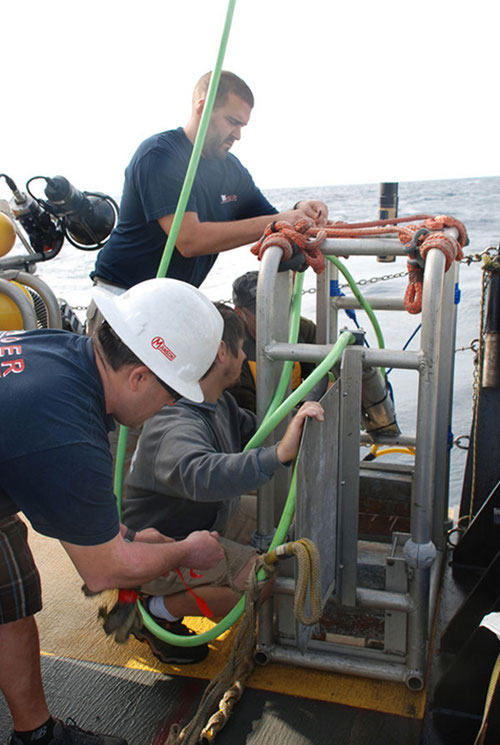
The ROV crew attempts to seal off the umbilical tear and brace the weak point at the pressor. Image courtesy of the Deepwater Canyons 2012 Expedition, NOAA-OER/BOEM. Download image (jpg, 84 KB).
Then it happened.
In less than a second, a swell lifted and dropped the rear of the ship and the umbilical connecting the ROV to the ship went slack and popped off the pulley to be pinched in the system. The heavy nylon outer shell of the cable was torn and the ROV was brought back on deck.
An attempt was made to patch the cable, but it failed testing and the ROV crew made the decision to cut the line and re-terminate it at the connection. Like anyone who spends time at sea, away from the convenience of stores and regular supplies, the crew of the Kraken II ROV brought with them a host of tools, supplies, and spare parts. They were prepared, literally, for almost anything – even this.
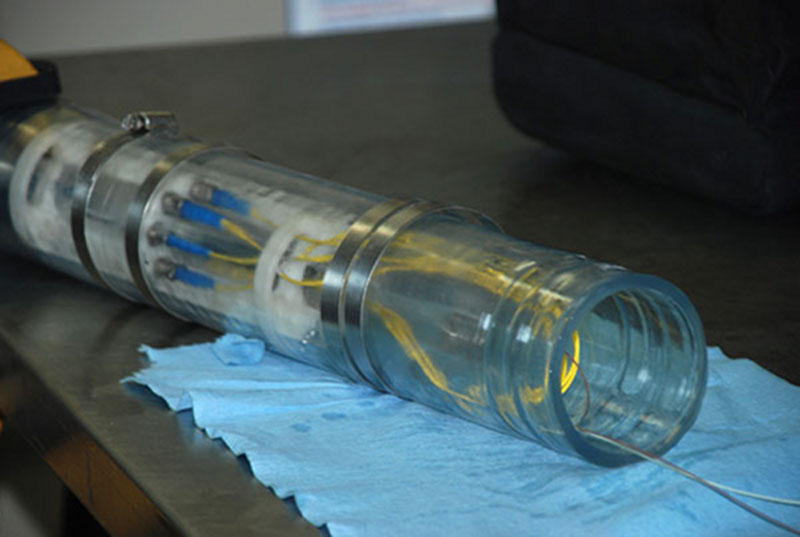
This PBOF (Pressure Balanced Oil Filled) connector allows the PBOF tether from the ROV to be connected to the fiber optics tether that connects it to the ship. This unit is mounted inside the pressor. Image courtesy of the Deepwater Canyons 2012 Expedition, NOAA-OER/BOEM. Download image (jpg, 55 KB).
Without ever having connected these particular components before, Rudy (aka the Terminator) said, “give me a day,“ and got to work.
Rudy needed a table and fairly dry place to work, so the cable was sprawled across the deck and into the open door of the wet lab. The cable was severed and the original piece was disconnected and carefully set up to serve as a model for the new end. The yellow PBOF (Pressure Balanced Oil Filled) cable terminator serves as the communications tether from the ROV to the pressor, which is then linked to the ship via the bright-green strong Kevlar-wrapped cable consisting of many layers of protective material, high-voltage lines, power shielding, and fiber optics.
With the disconnected piece laid out for guidance and a manual nearby, the Terminator (Rudy) settled in to work. Within hours, the cable was re-terminated, the PBOF was reconnected to the pressor, and the ROV was tested on deck. The Kraken II was ready for operations!
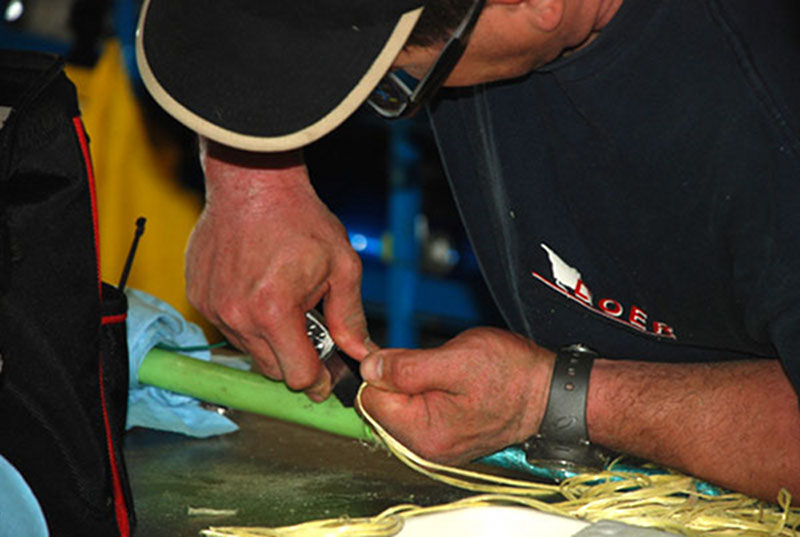
Rudy Schlepp, the Terminator! But, this termination isn’t the end, it is the beginning. Image courtesy of the Deepwater Canyons 2012 Expedition, NOAA-OER/BOEM. Download image (jpg, 72 KB).
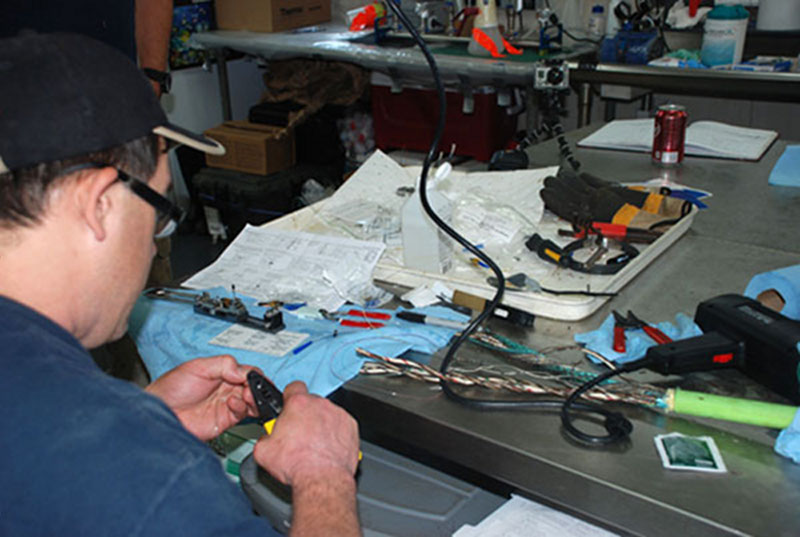
After removing the damaged piece of cable, Rudy begins the process of attaching it to the PBOF coupling. Image courtesy of the Deepwater Canyons 2012 Expedition, NOAA-OER/BOEM. Download image (jpg, 86 KB).
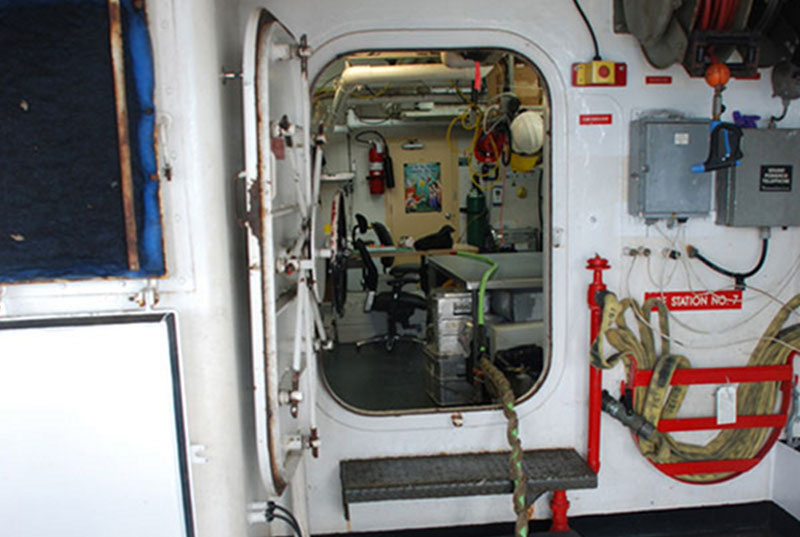
Shown here are the individual components of the damaged ROV cable (a bit out of order). At the top is the vinyl outer shell, the yellowish Kevlar fibers, a metal casing, green inner vinyl shell, metal shielding, and electrical conduit. Across the bottom right of the picture is a thin metal wire that is actually a casing containing four strands of fiber optics. Image courtesy of the Deepwater Canyons 2012 Expedition, NOAA-OER/BOEM. Download image (jpg, 86 KB).
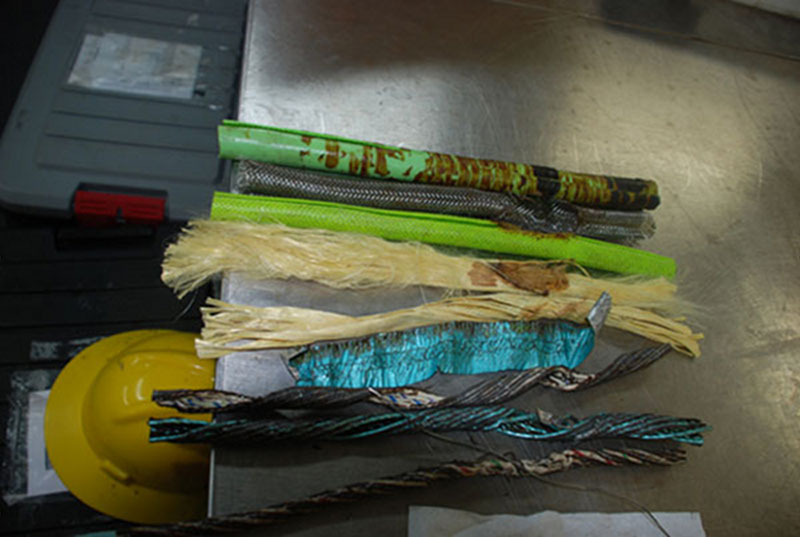
Shown here are the individual components of the damaged ROV cable (a bit out of order). At the top is the vinyl outer shell, the yellowish Kevlar fibers, a metal casing, green inner vinyl shell, metal shielding, and electrical conduit. Across the bottom right of the picture is a thin metal wire that is actually a casing containing four strands of fiber optics. Image courtesy of the Deepwater Canyons 2012 Expedition, NOAA-OER/BOEM. Download image (jpg, 76 KB).